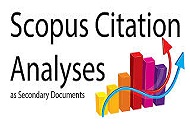Educational Revolution : Digital Project-Based Rotation Learning (DPBRL) Model to Improve Students' Critical Thinking Skills
DOI:
https://doi.org/10.33394/jk.v10i3.12634Keywords:
Digital Project, Rotation Model Learning, Critical Thinking, Digital Literacy.Abstract
References
Abbie, H., & Timothy, D. (2016). The Essentials of Instructional Design.
Ahmady, S., & Shahbazi, S. (2020). Impact of social problem-solving training on critical thinking and decision making of nursing students. 1–8.
Alharthi, A. D., Almotairi, K. H., & Elsigini, W. T. (2023). International Journal of Advanced and Applied Sciences COVID-19 era at Umm Alqura University. 10(6), 36–47.
Antonis, K., Lampsas, P., & Katsenos, I. (2023). Flipped classroom with teams-based learning in emergency higher education : methodology and results. 5279–5295.
Astuti, T. A., Nurhayati, N., Ristanto, R. H., & Rusdi, R. (2019). JPBIO ( Jurnal Pendidikan Biologi ). 4(2), 67–74. https://doi.org/10.31932/jpbio.v4i2.473
Chamo, N., & Biberman-shalev, L. (2023). education sciences ‘ Nice to Meet You Again ’: When Heutagogy Met Blended Learning in Teacher Education , Post-Pandemic Era.
Changes, C., & Education, T. (2023). education sciences Contextual Changes and Shifts in Pedagogical Paradigms : Post-COVID-19 Blended Learning as a Negotiation Space in Teacher Education.
Dewi, N. R., Listiaji, P., Akhlis, I., Kurniawan, I. O., & Widyaningrum, R. A. (2023). Project-based Laboratory Rotation Blended Learning Model to Train Students ’ Critical Thinking and Collaboration in Physics Course. 01023.
Dick and Carey. (2015). The Systematic Design of Instruction.
Golinelli, D., Boetto, E., Carullo, G., Nuzzolese, A. G., Landini, M. P., & Fantini, M. P. (2020). Adoption of digital technologies in health care during the COVID-19 pandemic: Systematic review of early scientific literature. Journal of Medical Internet Research, 22(11). https://doi.org/10.2196/22280
Haryono, K., & Hamzah, A. (2023). Blended learning : Adoption pattern of online classrooms in higher education. 12(1), 302–310. https://doi.org/10.11591/ijere.v12i1.23772
Heydarnejad, T., Fatemi, A. H., & Ghonsooly, B. (2021). The Relationship between Critical Thinking , Self-regulation , and Teaching Style Preferences among EFL Teachers : A Path Analysis Approach. 7(1), 96–108.
Horn, S. (2019). Critical thinking efficacy and transfer skills defend against ‘fake news’ at an international school in Finland. https://doi.org/10.1177/1475240919830003
Huang, W., London, J. S., & Perry, L. A. (2023). Project-Based Learning Promotes Students ’ Perceived Relevance in an Engineering Statistics Course : A Comparison of Learning in Synchronous and Online Learning Environments Project-Based Learning Promotes Students ’ Perceived Relevance in an Engineering Statistics Course : A Comparison of Learning in Synchronous and Online Learning. 0(0), 1–18. https://doi.org/10.1080/26939169.2022.2128119
Kömür, İ. A., Kılınç, H., & Okur, M. R. (2023). The Rotation Model in Blended Learning. 18(2), 63–74.
L.Gustafson, K. (2002). Instructional Development Model.
Mohseni, F., Seifoori, Z., & Ahangari, S. (2020). The impact of metacognitive strategy training and critical thinking awareness-raising on reading comprehension The impact of metacognitive strategy training and critical thinking awareness-raising on reading comprehension. Cogent Education, 7(1). https://doi.org/10.1080/2331186X.2020.1720946
Nuryadin, A. (2023). Blended Learning after the Pandemic : The Flipped Classroom as an Alternative Learning Model for Elementary Classrooms Karlimah Karlimah Dindin Abdul Muiz Lidinillah Ika Fitri Apriani. 10(May), 209–225.
Obeidat, A., & Yaqbeh, R. (2023). Implementation of blended learning approach in teaching introductory computer science course. 12(4), 2513–2520. https://doi.org/10.11591/eei.v12i4.5111
Reynders, G., Lantz, J., Ruder, S. M., Stanford, C. L., & Cole, R. S. (2020). Rubrics to assess critical thinking and information processing in undergraduate STEM courses. 5.
Serkina, Y., Vobolevich, A., & Petunina, I. (2023). Analysis of the Information and Communication Technology in Blended Learning for Economics Students in the Context of Digitalization. 15(3), 33–43. https://doi.org/10.5815/ijmecs.2023.03.03
Sharma, L., & Shree, S. (2023). education sciences Exploring the Online and Blended Modes of Learning for Post-COVID-19 : A Study of Higher Education Institutions.
Sugiyono. (2018). Metode Penelitian Kuantitatif, Kualitatif, R&D. Bandung: Alfabeta
Downloads
Published
How to Cite
Issue
Section
Citation Check
License
License and Publishing AgreementIn submitting the manuscript to the journal, the authors certify that:
- They are authorized by their co-authors to enter into these arrangements.
- The work described has not been formally published before, except in the form of an abstract or as part of a published lecture, review, thesis, or overlay journal.
- That it is not under consideration for publication elsewhere,
- That its publication has been approved by all the author(s) and by the responsible authorities – tacitly or explicitly – of the institutes where the work has been carried out.
- They secure the right to reproduce any material that has already been published or copyrighted elsewhere.
- They agree to the following license and publishing agreement.
Authors who publish with JK agree to the following terms:
- Authors retain copyright and grant the journal right of first publication with the work simultaneously licensed under a Creative Commons Attribution License (CC BY-SA 4.0) that allows others to share the work with an acknowledgment of the work's authorship and initial publication in this journal.Â
- Authors are able to enter into separate, additional contractual arrangements for the non-exclusive distribution of the journal's published version of the work (e.g., post it to an institutional repository or publish it in a book), with an acknowledgment of its initial publication in this journal.
- Authors are permitted and encouraged to post their work online (e.g., in institutional repositories or on their website) prior to and during the submission process, as it can lead to productive exchanges, as well as earlier and greater citation of published work.
- Open Data Commons Attribution License, http://www.opendatacommons.org/licenses/by/1.0/ (default)

This work is licensed under a Creative Commons Attribution-ShareAlike 4.0 International License.








